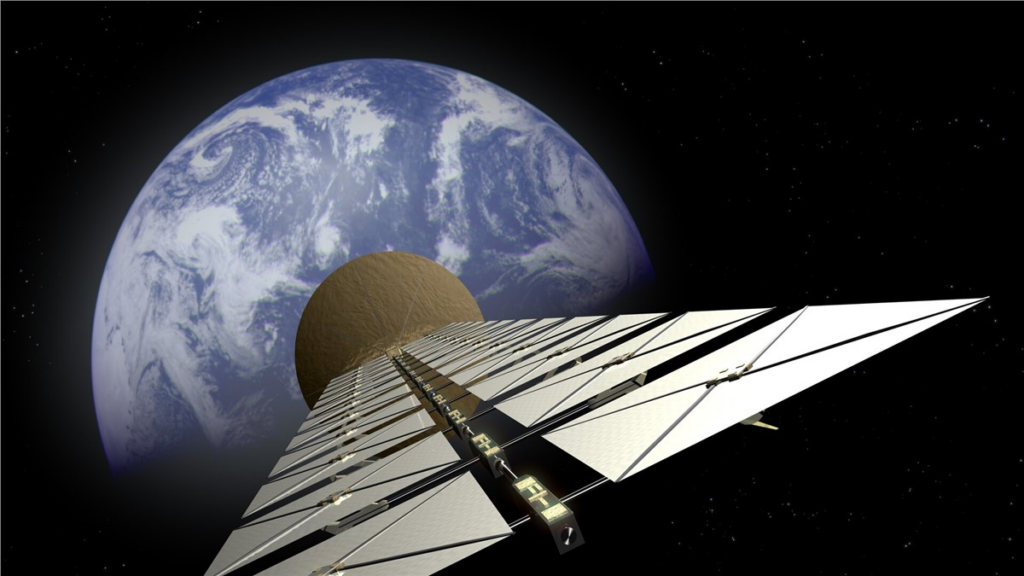Arthur D Little and Thales Alenia Space Italy are leading the parallel projects, which will finish by 2023. These ideas will guide SOLARIS’s R&D efforts.
Space-Based Solar Power gathers solar power in Earth orbit, where it is abundant and unaffected by weather or darkness, and wirelessly sends it to Earth. Space-Based Solar Power complements terrestrial renewables by providing reliable power 24/7, stabilizing the electricity grid as intermittent renewables increase and reducing the need for large-scale storage solutions.
Ministerial ESA Council accepted SOLARIS as Element 1 of the General Support Technology Programme.
In November 2022, the ESA Council at Ministerial Level approved SOLARIS as Element 1 of the General Support Technology Programme. Over the next two and a half years, it will collaborate with European industry to study Space-Based Solar Power’s benefits, implementation options, commercial opportunities, and risks as a contributor to Europe’s “NetZero” decarbonization of terrestrial energy.

By 2025, SOLARIS should help Europe decide whether to launch a full development program for commercial-scale space-based solar power, starting with a subscale in-orbit demonstrator to beam power to Earth.
“These contracts are for the first European concept studies of Space-Based Solar Power for more than 20 years, so today marks an important step,” says Sanjay Vijendran, ESA’s SOLARIS lead. “We are really starting from a blank sheet of paper to get an up-to-date design for what working solar power satellites could look like, sourcing promising ideas from everywhere we can, and leveraging the latest advancements in space and terrestrial technologies”.
The investigations will examine all methods of securely and efficiently transporting energy to Earth.
Sanjay says, “The studies will look at as wide a range of options as possible, including investigating all the different ways to move the energy, safely and efficiently, down to Earth: radio frequency transmission, lasers and simply reflecting sunlight down to solar farms on the ground.

“And we are happy that major energy players like the French electricity utility ENGIE and the Italian utility ENEL are included in the study consortiums, reflecting the potential value the energy sector is already seeing in this capability for the future. We must involve the energy sector from the outset and listen to their demands to ensure that we are constructing something that end customers will desire and utilize.
ESA is treating these early system concept studies like flight projects, with a fast pace and strict milestones, because their results will guide follow-on studies for a sub-scale demonstrator mission and research into SOLARIS’ key technologies.
ESA’s Basic Activities Preparation funds the two studies. ESA’s long-running General Support Technology Programme will fund SOLARIS technology R&D.
“These activities demonstrate the importance of ESA’s Preparation element in supporting ambitious ideas to become a reality,” says ESA’s Advanced Concepts and Studies Office chief Leopold Summerer. “Preparation-funded activities help ESA assess European industry interest in novel topics and set the stage for future research and technology development.”

SOLARIS coincides with global interest in space energy. In January, Caltech launched its Space Solar Power Demonstrator spacecraft to test important technologies like space-space microwave transmission of solar energy. China’s 2028 demonstrator will use a ground-based wireless power transmission test station, whereas Japan’s 2025 demonstrator will fly. The UK has been negotiating with Saudi Arabia to supply its Neom smart city zone with carbon-free space electricity.
“Space-Based Solar Power is looking a lot more feasible and desirable than ever before,” thanks to reusable launchers, mass production of satellite gear, and modular solar power satellite designs.

In addition, space robotics and in-space assembly and servicing technologies have advanced greatly in the previous two decades, which will be vital for solar power station building and maintenance. Finally, the sheer difficulties of transitioning to Net Zero within 25 years with present technologies—and the implications of not doing so—demands research of other alternatives that could help us reach our goal.”

